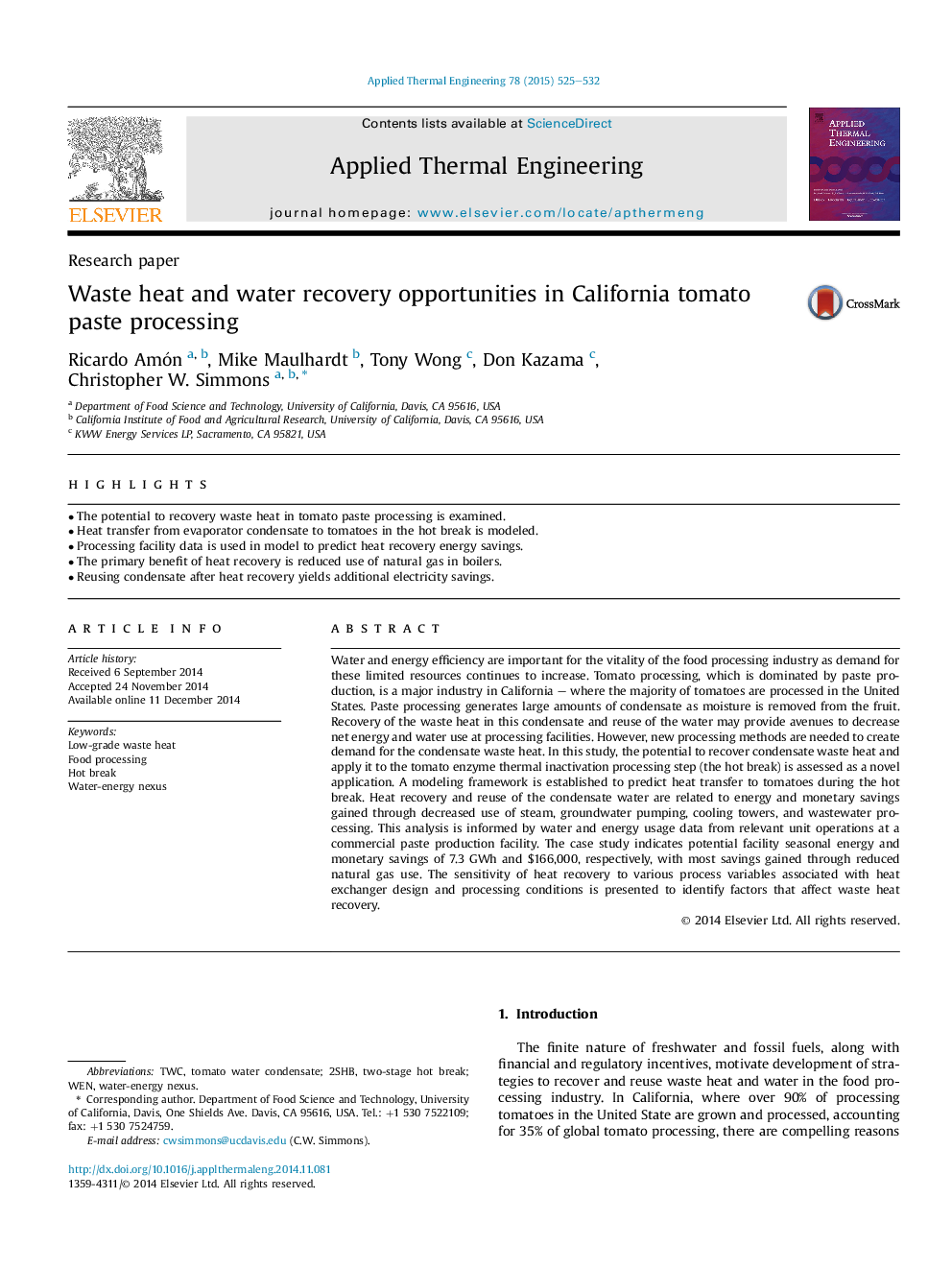| Article ID | Journal | Published Year | Pages | File Type |
|---|---|---|---|---|
| 7048981 | Applied Thermal Engineering | 2015 | 8 Pages |
Abstract
Water and energy efficiency are important for the vitality of the food processing industry as demand for these limited resources continues to increase. Tomato processing, which is dominated by paste production, is a major industry in California - where the majority of tomatoes are processed in the United States. Paste processing generates large amounts of condensate as moisture is removed from the fruit. Recovery of the waste heat in this condensate and reuse of the water may provide avenues to decrease net energy and water use at processing facilities. However, new processing methods are needed to create demand for the condensate waste heat. In this study, the potential to recover condensate waste heat and apply it to the tomato enzyme thermal inactivation processing step (the hot break) is assessed as a novel application. A modeling framework is established to predict heat transfer to tomatoes during the hot break. Heat recovery and reuse of the condensate water are related to energy and monetary savings gained through decreased use of steam, groundwater pumping, cooling towers, and wastewater processing. This analysis is informed by water and energy usage data from relevant unit operations at a commercial paste production facility. The case study indicates potential facility seasonal energy and monetary savings of 7.3Â GWh and $166,000, respectively, with most savings gained through reduced natural gas use. The sensitivity of heat recovery to various process variables associated with heat exchanger design and processing conditions is presented to identify factors that affect waste heat recovery.
Related Topics
Physical Sciences and Engineering
Chemical Engineering
Fluid Flow and Transfer Processes
Authors
Ricardo Amón, Mike Maulhardt, Tony Wong, Don Kazama, Christopher W. Simmons,
